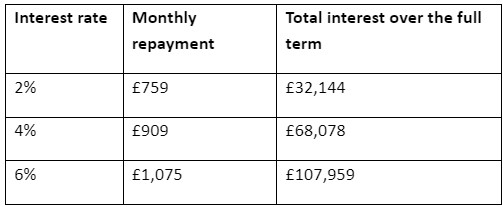Blog Archive
- October 2025
- September 2025
- August 2025
- July 2025
- June 2025
- May 2025
- April 2025
- March 2025
- February 2025
- January 2025
- December 2024
- November 2024
- October 2024
- September 2024
- July 2024
- June 2024
- May 2024
- April 2024
- March 2024
- February 2024
- January 2024
- December 2023
- November 2023
- October 2023
- September 2023
- August 2023
- July 2023
- June 2023
- May 2023
- April 2023
- March 2023
- February 2023
- January 2023
- December 2022
- November 2022
- October 2022
- September 2022
- August 2022
- July 2022
- June 2022
- May 2022
- April 2022
- March 2022
- February 2022
- January 2022
- December 2021
- November 2021
- October 2021
- September 2021
- August 2021
- July 2021
- June 2021
- May 2021
- April 2021
- March 2021
- February 2021
- January 2021
- December 2020
- November 2020
- October 2020
- September 2020
- August 2020
- July 2020
- June 2020
- May 2020
- April 2020
- February 2018
- January 2018
- December 2017
- November 2017
Categories
Millions of fixed-rate mortgages are ending. Discover 6 practical steps you can take now
Published: February 3, 2023 by Jennifer Armstrong
Over the last year, interest rates have increased from historic lows. Fixed-rate mortgage payers that have been shielded from the rises so far could find their outgoings rise if their deal ends in 2023.
The Bank of England increased its base interest rate several times over the last 12 months to tackle high levels of inflation.
For savers, it’s been good news, as interest rates on savings accounts have started to rise after more than a decade of being low.
However, for borrowers, it means the cost of debt has climbed. From credit cards to loans, the amount you pay to service debt has probably increased. As a mortgage is often one of the largest loans you’ll take out, even a small change to the interest rate could affect you.
57% of fixed-rate mortgages ending have an interest rate below 2%
Data from the Office for National Statistics suggests that 1.4 million households will need to renew their mortgage deal this year.
Among the fixed-rate deals coming to an end, 57% have an interest rate below 2%. It’s unlikely you’ll find a new mortgage deal that has an interest rate this low. So, monthly repayments could rise for thousands of households over 2023.
Let’s say your remaining mortgage debt is £150,000. If you choose a 20-year repayment mortgage, the table below shows how an increase of just a few per cent could affect the cost of borrowing.

Source: MoneySavingExpert
If your mortgage deal is ending, being proactive can help you prepare for the potentially higher costs and get to grips with your budget.
6 practical things you should do if your fixed-rate mortgage ends in 2023
1. Review your budget
Take some time to understand what rising interest rates will mean for you. Being prepared means the hike in your mortgage outgoings won’t be unexpected.
2. Decide if taking out a new mortgage deal is right for you
While it can be tempting not to take out a new mortgage deal if there’s nothing comparable to your current one, you could end up paying more.
Once your current deal ends, you’ll usually be moved on to your lender’s standard variable rate (SVR). This rate isn’t usually competitive, and you could save money by taking out a new deal.
However, there are some circumstances when remaining on your lender’s SVR does make sense. For instance, if you plan to move, you could face exit fees if you choose to take out a new deal. Or, if you want to make significant overpayments, remaining on the SVR could mean you avoid fees.
3. Decide what kind of mortgage is right for you
Do you want to take out another fixed-rate mortgage? Or would a variable- or tracker-rate mortgage suit you now?
Interest rates may continue to rise over 2023. So, you may choose a fixed-rate deal again. This would mean that your repayments could not increase during the term. However, if interest rates began to fall, you wouldn’t benefit.
In contrast, with a variable- or tracker-rate mortgage, the interest rate could rise and fall.
Which is right for you will depend on your financial circumstances and priorities. If you want certainty, a fixed-rate deal can be useful, but you should review all your options.
4. Set out the mortgage term and how much you want to borrow
Usually, each time you remortgage, the term and amount you borrow falls. However, this doesn’t have to be the case.
You may choose to shorten or extend how long you’ll be paying the mortgage. If you shorten the term, your repayments will be higher, but you could be mortgage-free sooner and pay less interest overall. If the cost of living crisis means your budget will be stretched, choosing a longer term could provide more flexibility and lower initial repayments but will mean the overall cost of borrowing is higher.
You may also choose to borrow more. You could use this money to renovate your home or pay for other expenses. Again, keep in mind that borrowing more against your home will mean paying more in interest, and it’ll affect your repayments.
5. Search for deals early
You can often lock in a new mortgage deal up to six months before your current one ends.
Searching early means you can avoid paying your lender’s SVR while you find a new deal and it gives you more time to find a suitable option for you.
6. Contact us
We’re here to help you find a mortgage that suits your needs. If your current deal is coming to an end, please get in touch. We can help you understand which type of mortgage could be right for you and how the rising interest rates will affect your repayments.
Please note:
This blog is for general information only and does not constitute advice. The information is aimed at retail clients only.
Your home may be repossessed if you do not keep up repayments on a mortgage or other loans secured on it.

